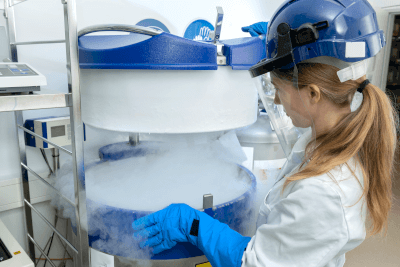What Is a Cryopreservation Tank?

A cryopreservation tank is a specialized container used for storing biological samples at extremely low temperatures, typically between -60°C and -160°C. These tanks commonly use liquid nitrogen for cooling, maintaining temperatures as low as -196°C, although -80°C freezers can also be employed for cryopreservation.
The key advantage of cryopreservation is its ability to minimize sample degradation by halting biological reactions and enzymatic activities, thereby preserving sample quality for future experiments and analyses. However, the materials and durability of the container are crucial, as inappropriate materials can lead to damage at such low temperatures.
Uses of Cryopreservation Tanks
Cryopreservation tanks have varied applications across several fields:
1. Biological Research
In biological research, cryopreservation is essential for maintaining the viability of cells and tissues over extended periods. This method is also employed in biobanks for large-scale sample preservation, instrumental in disease research and personalized treatments.
2. Pharmaceutical Development
These tanks are vital in pharmaceutical development for preserving biological materials and intermediates, particularly crucial for temperature-sensitive biopharmaceuticals. Clinical trial samples are also often cryopreserved for later analysis.
3. Medical Care
Cryopreservation plays a significant role in organ transplantation, preserving organs like hearts and kidneys at very low temperatures to maintain their biological activity until transplantation. It also facilitates matching between donors and recipients by extending storage times. Additionally, it’s used in regenerative medicine for preserving harvested cells and tissues for future therapeutic use.
Principle of Cryopreservation Tanks
Cryopreservation tanks function by maintaining extremely low temperatures, primarily using liquid nitrogen or evaporators. The cold gas produced by liquid nitrogen’s evaporation helps maintain the low temperatures necessary for sample preservation.
These tanks are designed to minimize liquid nitrogen evaporation and ensure a tight seal, maintaining sample quality over prolonged periods. Selecting a tank involves considering the material compatibility with liquid nitrogen, the required temperature range, and the appropriate capacity for the intended samples.